Dental Express Design Project Overview
Summary
We used the Jobs-to-Be-Done approach to build a focused V1 of a desktop smile-design tool. The goal was simple: reduce setup friction, shorten the time to a first reviewable design, and increase the chance that the first printed try-in matches what was approved.
In a 10-case pilot we saw: setup to aligned baseline drop ~5 minutes, manual corrections drop ~3.5 per case, chair-time to first design drop ~19 minutes, and first-print match rise from 72% to ~90%.
Project at a Glance
Company: Nashawy Bros.
Industry: Dental software
Role: Product Designer
Timeframe: Jul 2024 – Oct 2024
Platform: Desktop
Team: Me (Product Design) and one Software Developer
What I owned: JTBD discovery, importance/satisfaction analysis, job stories and acceptance criteria, workflow and IA, prototype and measurement plan, pilot design and analysis
TL;DR
Problem
Clinics work fast in 2D tools; labs need precise 3D models. Rebuilding a 2D plan in 3D often caused drift, more iterations, and slower approvals.
What we built
A 2D/3D tool: clinicians can work with familiar 2D curves and overlays that act on the 3D model; technicians can open the same project and continue with detailed 3D work (e.g., sculpting and print prep). Setup includes a Guidelines screen where key facial guidelines can be placed automatically from real-world measures you enter.
Result (10-case pilot)
Chair-time to first design from ~68 to ~49 min; setup from 23 to ~18 min; manual corrections from 7 to ~3.5 per case; first-print match from 72% to ~90%.
The Challenge
We started with an outdated 2D tool (DXD). The brief was to ship a resellable product that aligns clinic and lab expectations, uses standards-based exports, and produces a try-in that matches the approved plan - on a tight schedule with a two-person team.

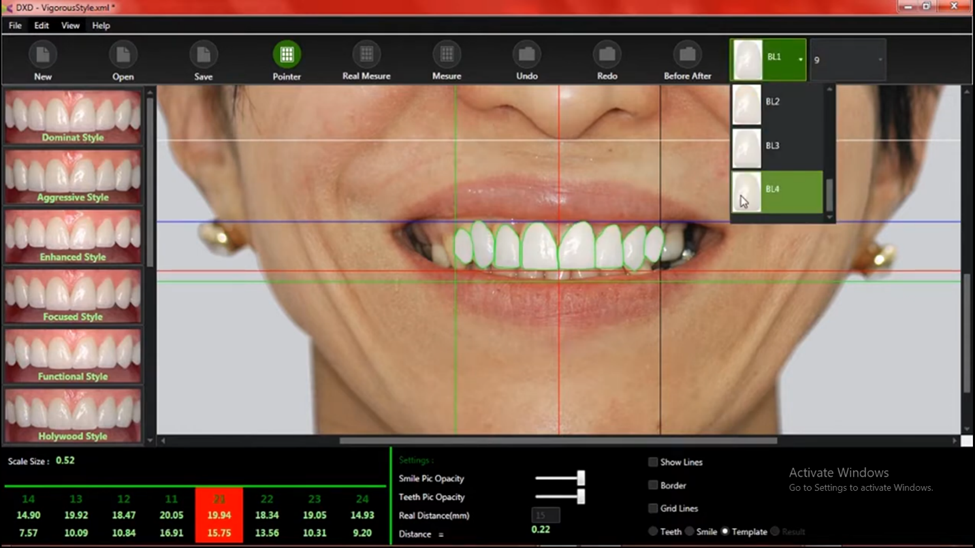
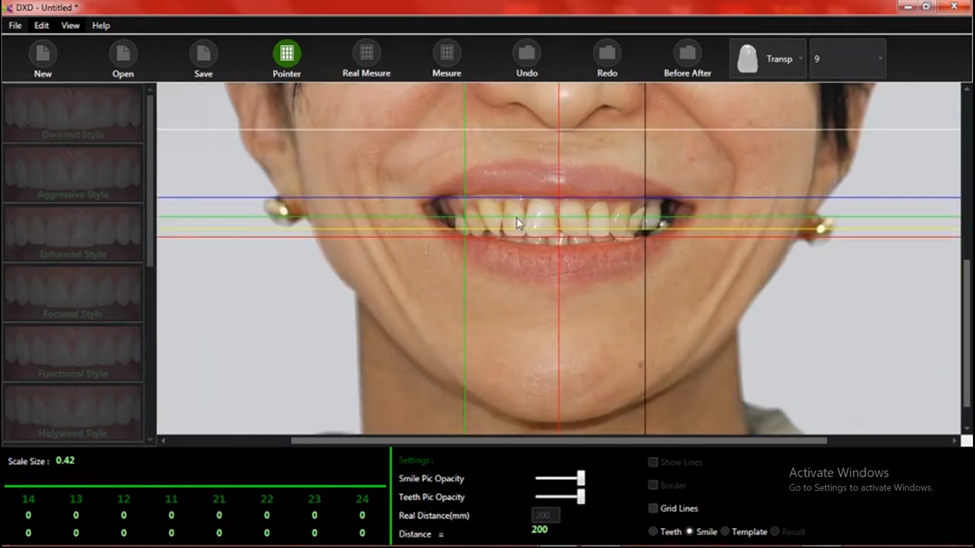
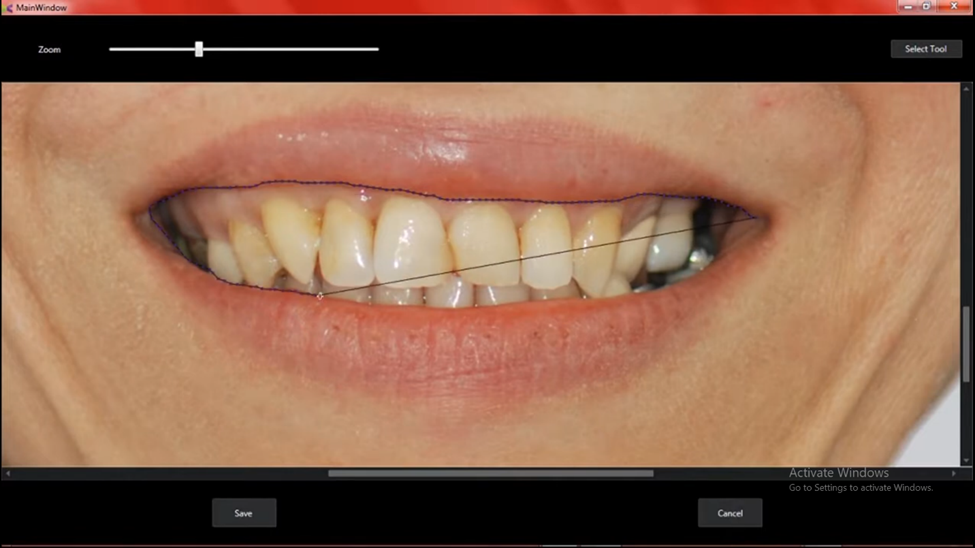
What We Learned
From seven interviews (each with a recent-case walkthrough and one live case for timing):
- Setup to an aligned baseline averaged 23 minutes; 7 manual corrections per case.
- Chair-time to a first design was about 68 minutes.
- First-print match averaged 72%; when a 2D plan had to be rebuilt in 3D, iterations increased by ~0.6 on average.
An importance vs satisfaction survey put the top opportunities in this order: first-print match, chair-time, setup speed. A quick market scan suggested Exocad is strong on alignment and fidelity; DSD-style tools are fast for early approval; DXD could stand out by focusing on those top three outcomes.

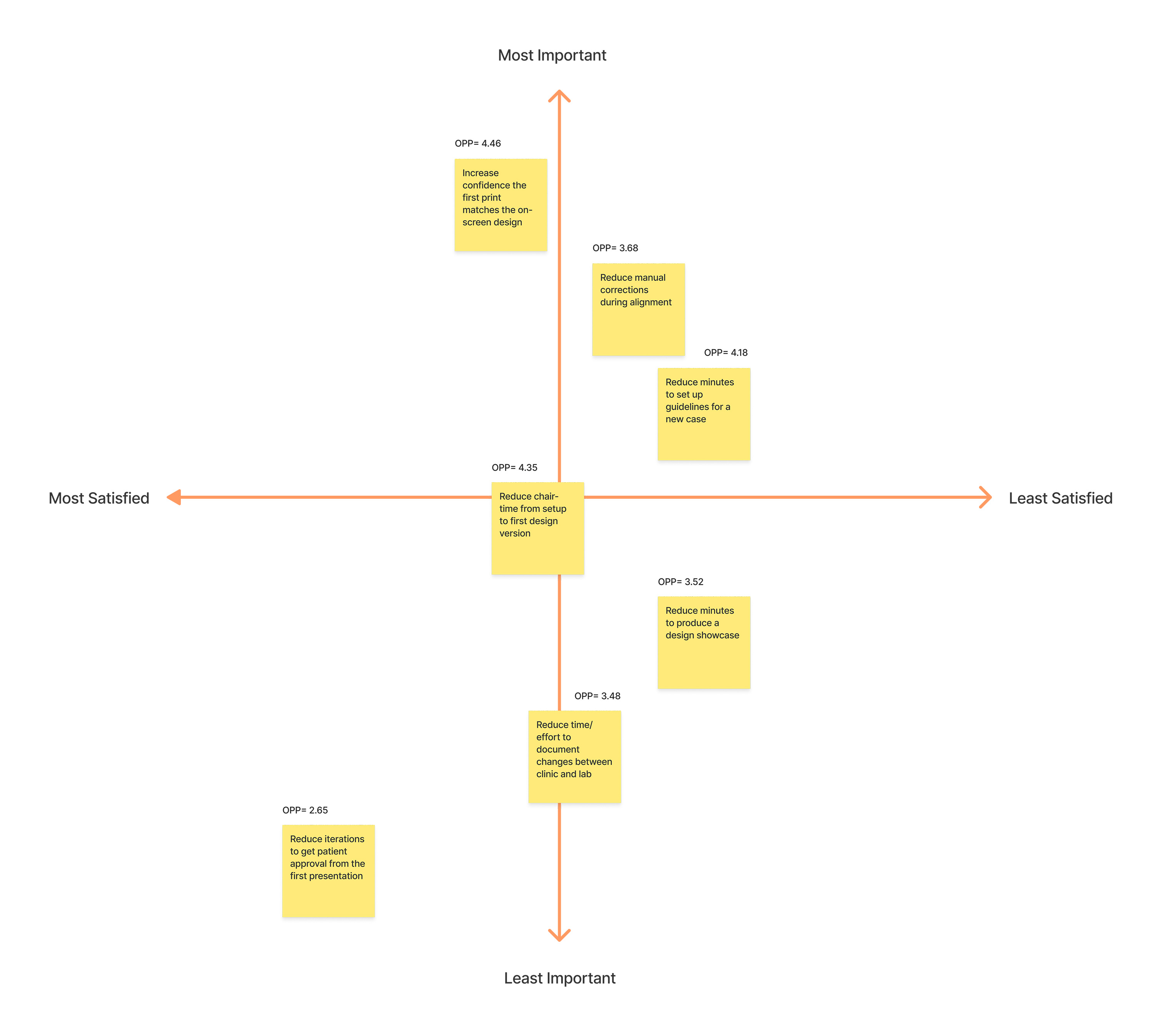
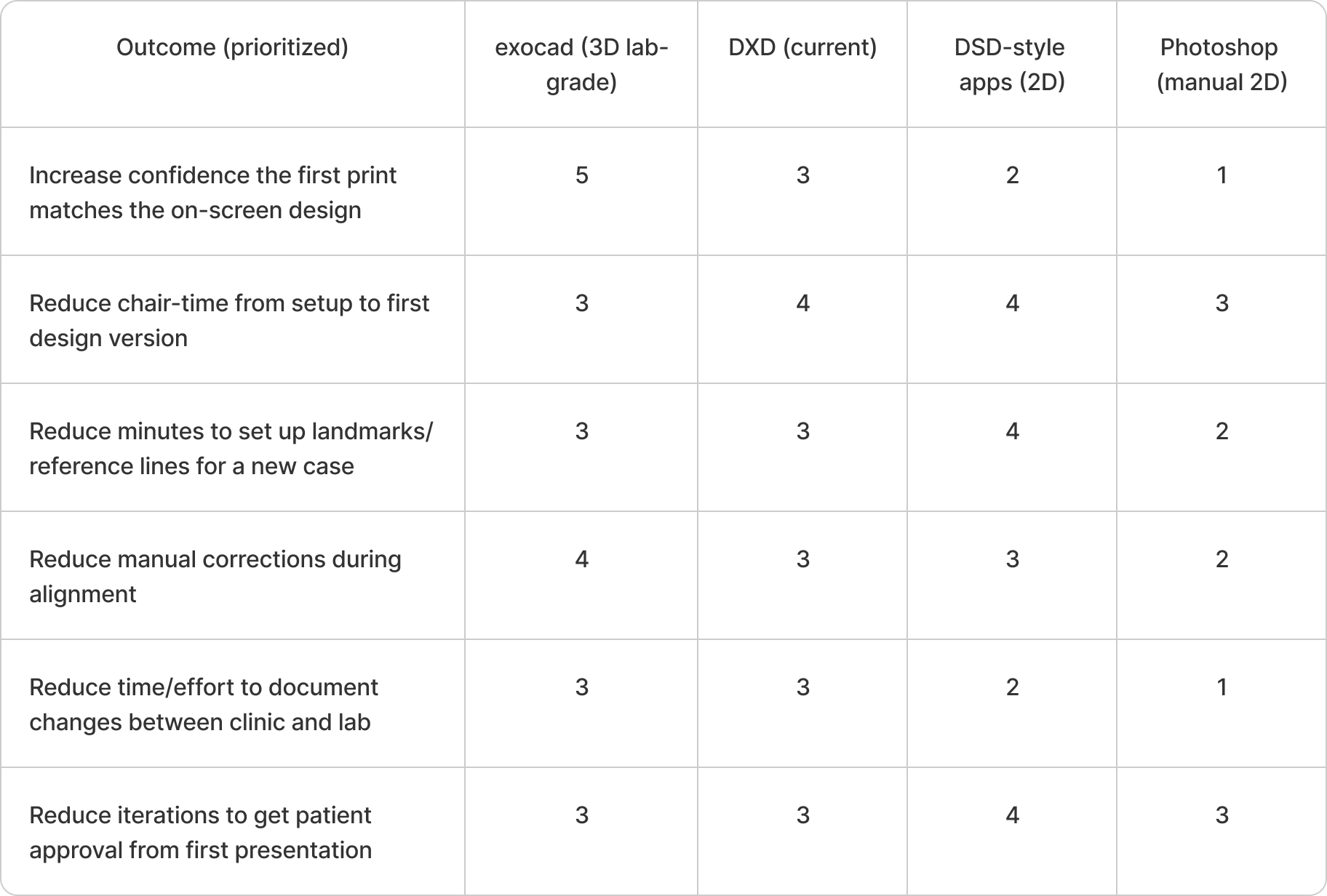
What Changed in V1
2D/3D in one tool (2D controls on a 3D model)
Clinicians can make fast, precise edits with familiar 2D curves and overlays that act directly on the 3D model. Lab technicians can open the same case and continue with detailed 3D work. Using one tool avoids a 2D - 3D rebuild.
Why it matters: fewer mismatches after handoff.
Pilot effect: first-print match rose from 72% to ~90%.

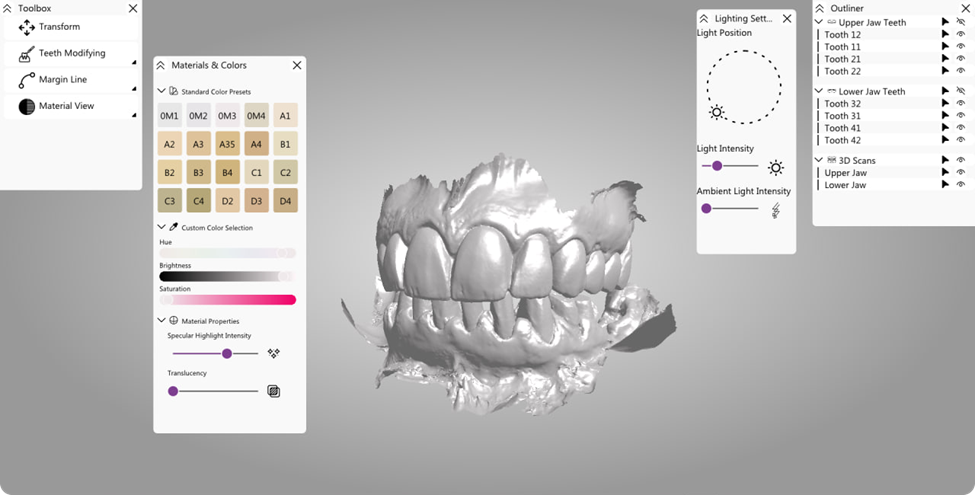
Faster guideline setup
Project setup spans several screens, including a dedicated Guidelines screen. Entering real measures triggers automatic placement of key facial guidelines. We also added presets for common cases and suggestions for landmarks and lines.
Why it matters: less fiddling during alignment.
Pilot effect: setup time from 23 to ~18 minutes; manual corrections from 7 to ~3.5 per case.
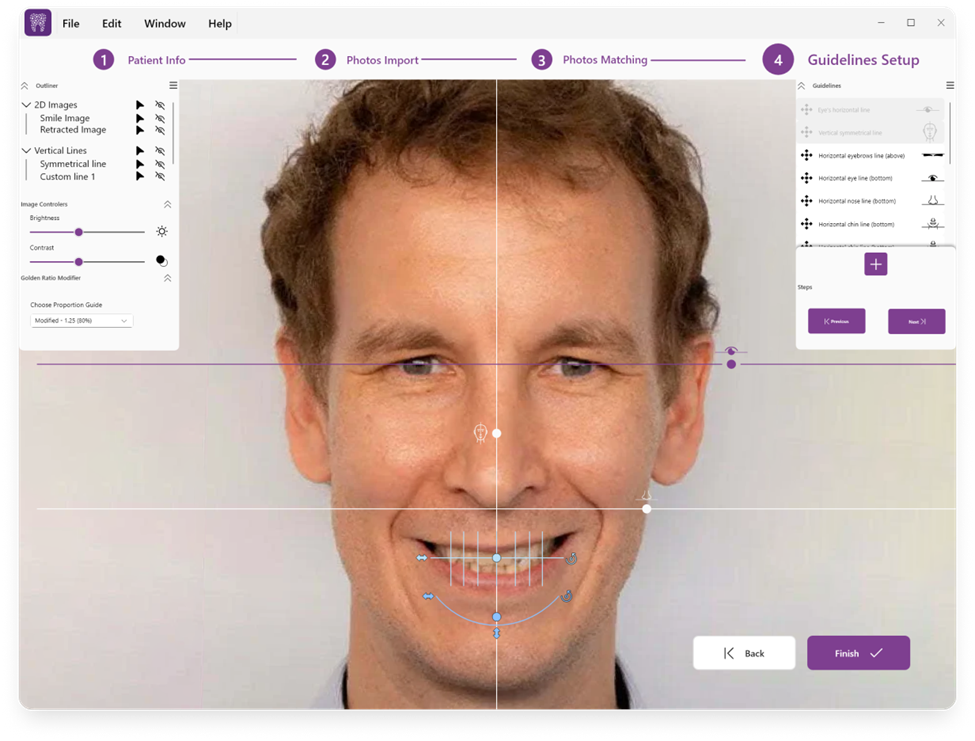
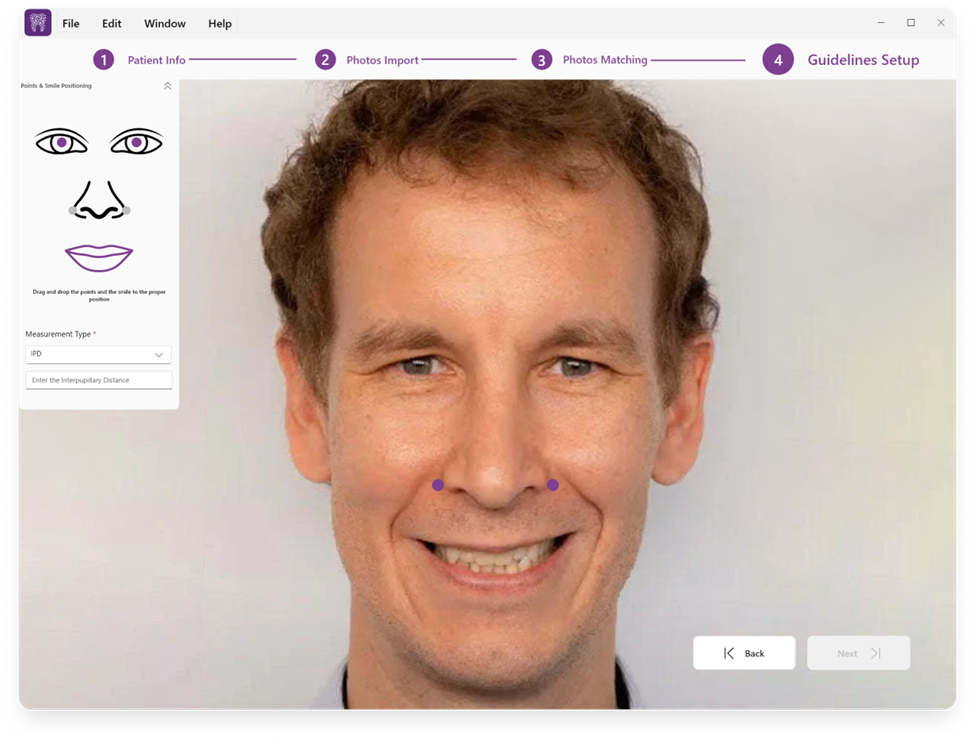
Quicker path to a first reviewable design
Two things made this faster: quicker Prepare (thanks to auto-guidelines) and a simplified, sufficient set of design tools with sensible defaults.
Pilot effect: chair-time to first design from ~68 to ~49 minutes.

How We Validated
Methods: seven interviews (2 Exocad, 3 DXD, 2 other tools) with a recent-case walkthrough and one live case for timing; an importance vs satisfaction survey; a competitive coverage grid; and a 10-case pilot for V1 measurements. We dropped one subjective metric ("first version meets brief") and kept numbers we could observe: time, corrections, and print acceptance.
Accessibility wasn't formally audited in V1; we focused on readable layout and clear focus states. A full audit is on the roadmap.
One JTBD Example
When I hand off for printing, I want the try-in to match the approved design, so we avoid rework.
How we'll know: first-print match > 85%; post-print fixes < 15% of cases; exports preserve alignment.
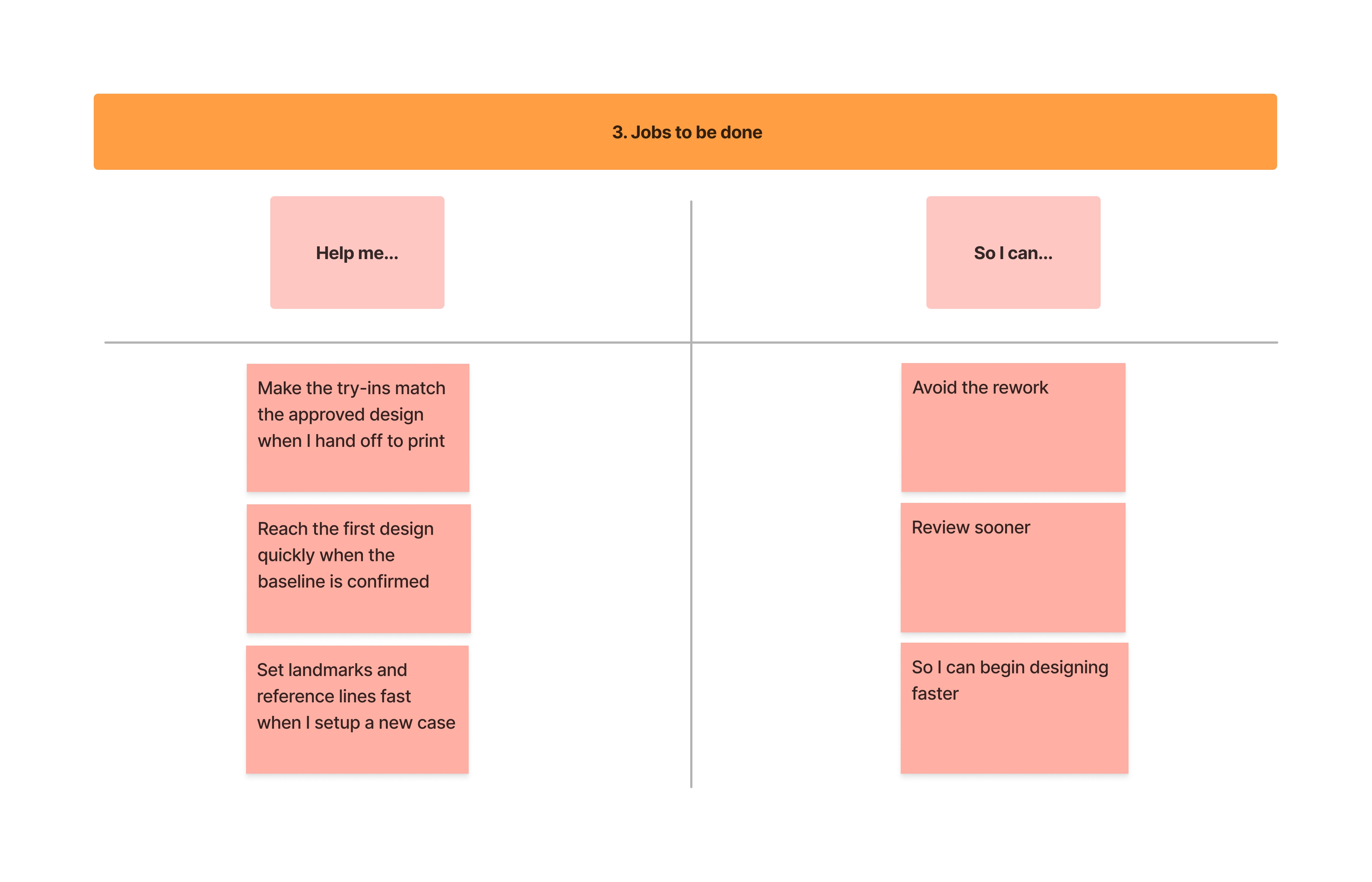
Results from the Pilot
• Setup to aligned baseline: from 23 to ~18 minutes
• Manual corrections during alignment: from 7 to ~3.5 per case
• Chair-time to first design: from ~68 to ~49 minutes
• First-print match: from 72% to ~90%
First-Print Match (%)
Setup to Aligned Baseline (min)
Manual Corrections (count)
Chair Time to First Design (min)
What likely drove the gains
- • Editing a 3D model with familiar 2D controls, and using one 2D/3D tool across clinic and lab, reduced mismatches after handoff.
- • Automatic guideline setup and presets shortened alignment and cut corrections.
- • A leaner toolset with defaults reduced time to a reviewable first design.
What's Next
- • Improve automatic guideline placement and presets; aim to reduce manual corrections by another two per case.
- • Add pre-print checks (tolerances by material/printer) to push first-print match further.
- • Enrich exports with machine-readable brief elements and lab acknowledgments to reduce misunderstandings.
Notes and Limits
- • The numbers above come from a 10-case pilot; we'll repeat the measures on a larger sample.
- • First-print match means "accepted at delivery without reprint or chairside adjustments." Long-term fit wasn't part of this pilot.
- • A formal desktop accessibility audit is planned.